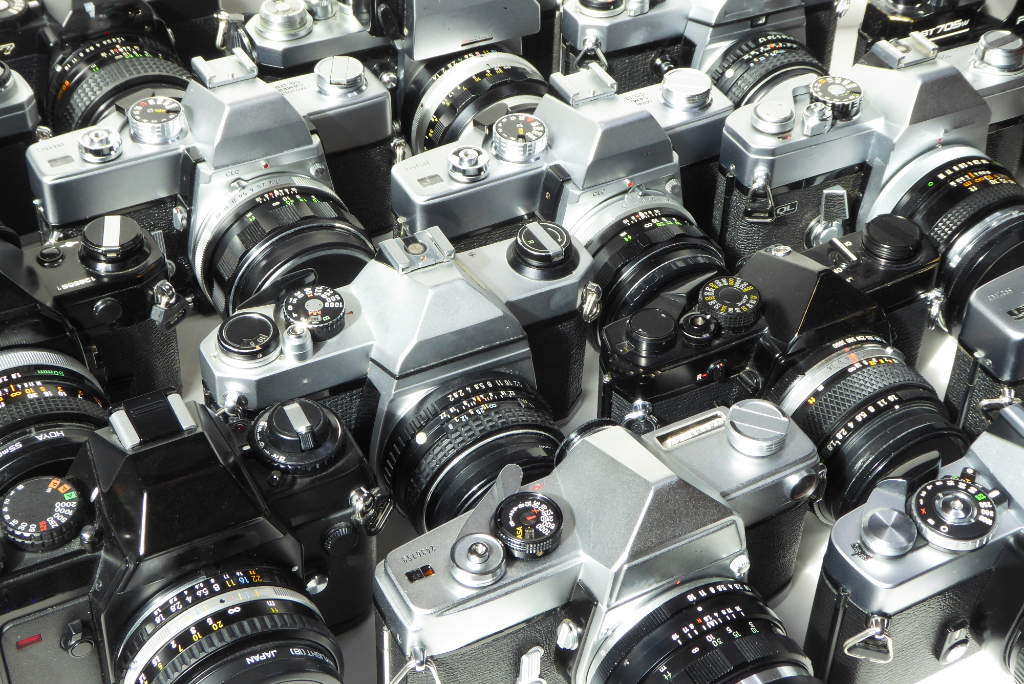
If you have read the previous articles about buying cameras on eBay then this quick film camera buyers guide will give you the essentials for the most common cameras for sale.
This film camera buyers guide is not fully comprehensive, doesn’t cover every 35mm SLR ever made but is based on hard-won experience of cameras we have collected and curated.
Before you make any decisions on which camera its a good idea to check out what the accessories will cost and what the downsides may be. if you want to do fast action work it’s obviously best to make sure that your chosen camera can accept a film winder and what the costs may look like plus reliability. Pentax winders for the MX series are notorious for breakdowns. Generally motor drives are not a great idea on an old film camera. They place a strain on the mechanics of the camera and these are now old you are running a risk each time you press the button. It’s rather like running a vintage car flat out – expect trouble.
You may also want to consider lenses. These can vary widely and exotic lenses are ALWAYS expensive no matter the make but its best to check this out before making a decision. Canon and Nikon lenses are often very pricey where Pentax and Minolta are relatively inexpensive. Of course there are third party lenses which wont break the bank so you always have alternatives but it’s a good idea to check out the costs before you commit to the camera.
Minolta – Film Camera Buyers Guide
Minolta SRT Series
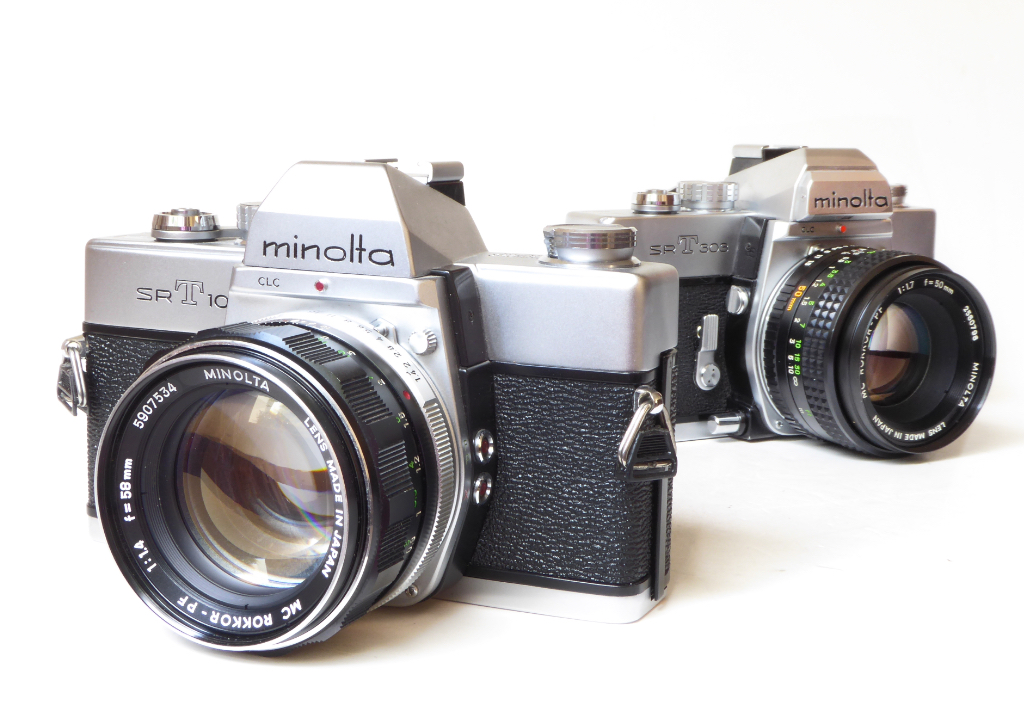
One of the last bargains on the shelf. SRTS are readily available at low prices. Built like a tank and generally reliable, plus almost any professional tech can fix them. However, you should be aware of potential issues: –
Meter failure – is very common in SRTs. This may be a simple fix but it very often indicates one or both of the meter cells are dead. There’s no easy fix as spares are no longer available, so you will need a donor camera. Of course, you can just use an external light meter.
Shutter issues – of the dozen or more SRTs bought from eBay, none have had an accurate shutter without needing some tuning. You may be ok here as black and white film has a latitude of around 2 stops. If your shutter is a bit adrift it may make no difference to your output but more serious problems like shutter capping and jams caused by dried-out lubrication are also common and may ruin your pictures.
Aperture read-out – the mirror can fall off and be lost on any Minolta SRT equipped with the aperture read-out feature. This only affects Minolta SRTs with the aperture read-out feature of course
Minolta XG-M and XG-x Series
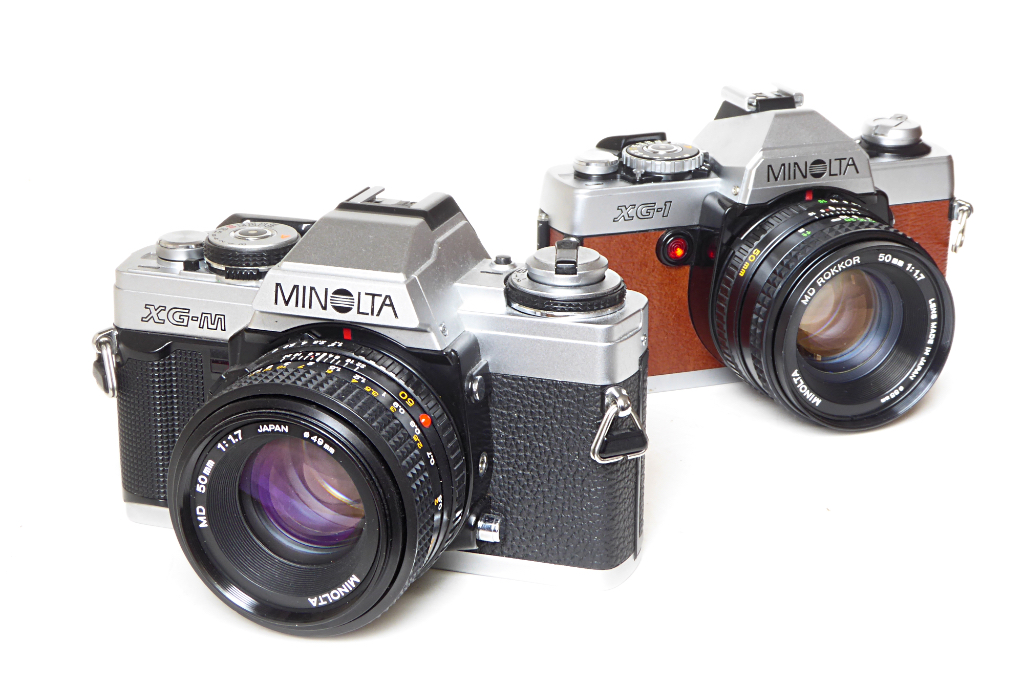
Much undervalued electronic-based Minoltas. Generally very reliable but the XG series can suffer prism de-silvering thanks to foam Minolta installed and unlike the Olympus OM-1 or Canon FTb, getting to the foam is a big job and beyond the amateur. A clear viewfinder is a must. Reject any with apparent prism de-lamination which usually shows itself as a bar or dark band around the lower edge of the view through the viewfinder.
A common issue with the XG series is the film speed and aperture tracks getting clogged and causing erratic metering, this is a relatively straightforward job.
The aperture read-out mirror can fall off and be lost on any Minolta X series equipped with the aperture read-out feature.
Ludicrously inexpensive and undervalued series from Minolta. Early XG models had tantalum capacitors, later ones substituted cheaper electrolytic types and these can fail. It’s a simple job if you are handy with electronics.
The XG-M was the flagship of the XG series but can suffer shutter derails and un-serviced units can have slow shutters plus it can be prone to capacitor failure and with 4 capacitors to replace including two which are tough to get at it can be a bit of a headache. Maybe the last bargains left on the shelf for those on a budget though.
Minolta X-300, X-500 and X-700

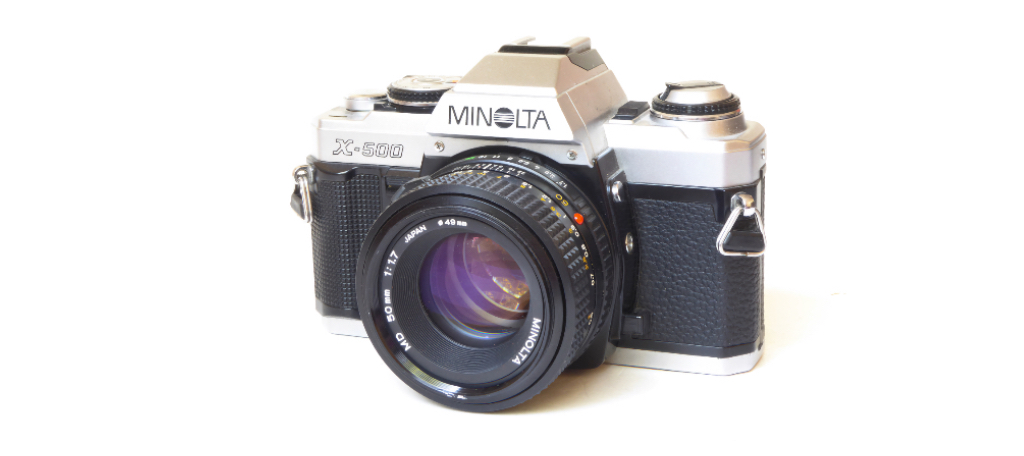
Generally reliable but if buying the flagship of the series the X-700 go for a serial number lower than 2000000. Later ones substituted solid and reliable tantalum capacitors for cheaper electrolytic types. The cheaper capacitors can fail and jam the camera up. Symptoms usually show up with no shutter firing and a locked-up winder. It may free itself after a power down and power up. but it will be signalling a replacement is needed soon.
Disregard people who say it’s easy to replace these unless you have soldering skills and gear to do the work. Even then you can be caught out as the X700 can suffer other issues which look like capacitor failure but are a good deal more complicated to fix.
Even if it’s a capacitor failing a dying capacitor can discharge toxic, acidic stuff onto the circuitry and destroy it in the process. DON’T assume every X700 with issues is a simple capacitor issue. Bear in mind the X-700 is an XG-M with program mode and Minolta shoehorned extra features in making it a complicated beast if the electronics are faulty. It’s become somewhat hyped like the Canon AE-1 but bargains are still out there.
X-500s are considered better by some, easier to fix a failing capacitor in them and some prefer its more manual approach. The X-300 was the budget one of the family but is still a pleasant camera to work with if a bit basic. Like all the X series the 300 can suffer capacitor issues but it’s relatively simple to fix if you are deft with soldering.
The aperture read-out mirror can fall off and be lost on any Minolta X-x00 series equipped with the aperture read-out feature.
For a full break down on the Minolta ‘X’ Series check out our in depth review HERE.
Minolta XD5 & XD7
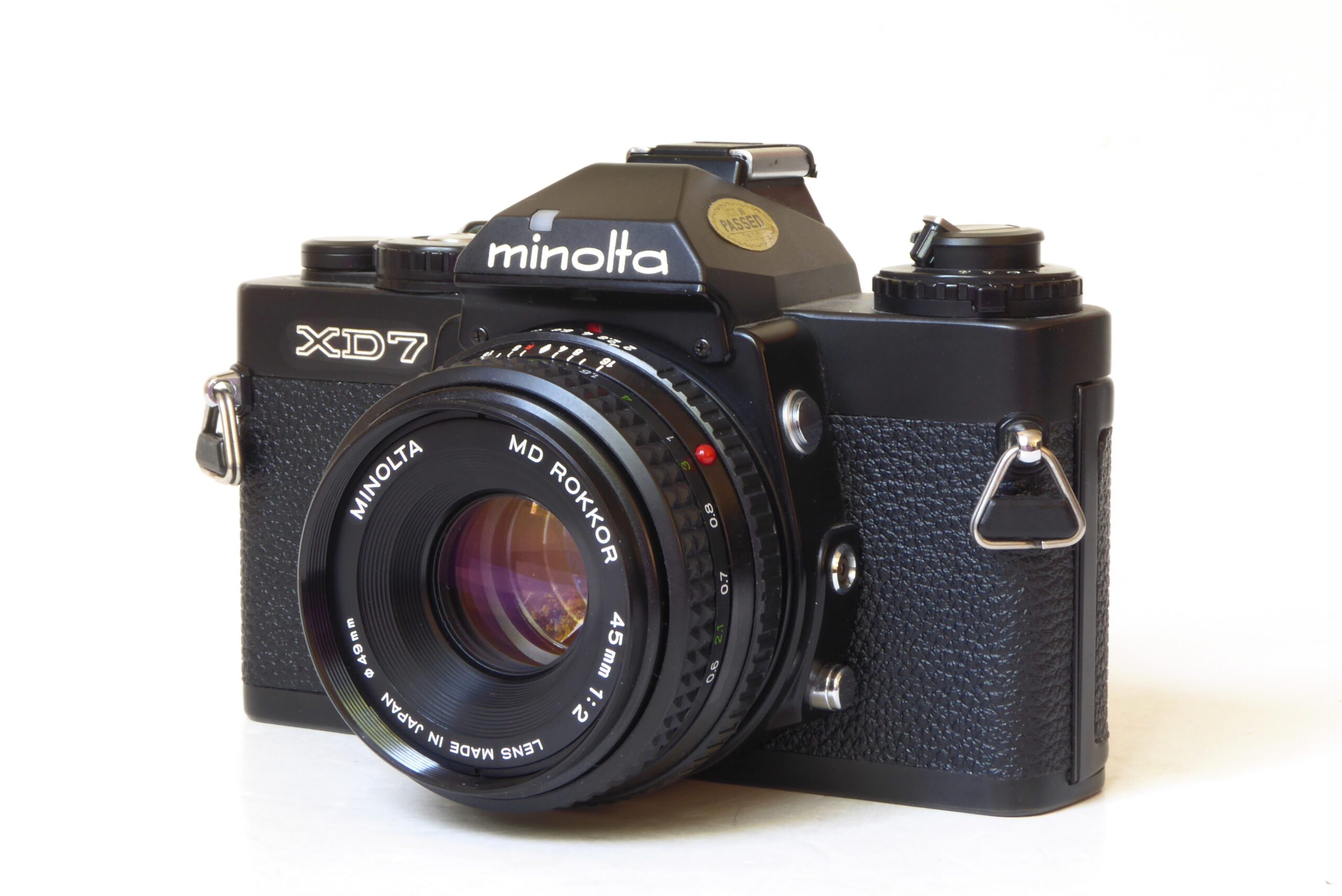
The high point of manual focus from Minolta and maybe the best manual focus camera ever built by any of the major manufacturers.
This is one where a wind and firing of the camera may tell you nothing. The camera can be suffering a condition called ‘overspeed’ in this mode the camera will shoot everything at 1500th of a second. If this is happening it’s end of watch. Reject any XD which has odd shutter behaviour – chances are it will be impossible or expensive to repair.
Another problem often seen on the XD series is the air piston which acts to slow the mirror down can be clogged resulting in a very slow shutter action. It’s fixable but not easy.
The XD5 and XD7 are very complex beasts it simply HAS to work so don’t con yourself a slightly substandard one will be an easy fix – they almost certainly won’t be and relatively few techs will work on them and when they do expect a fairly hefty repair bill.
Like the XG series the XDs are prone to film speed and aperture tracks getting clogged and causing erratic metering. Unlike the XG this is not a simple job for most (just getting the top off and back on again will test the average person’s patience to the limit). A full CLA (clean, lubricate and adjust) will be in the region of £175 to fix them to good operating condition. They are lovely when working but a major headache when anything goes wrong.
Like other Minoltas the aperture read-out mirror can fall off and be lost on any Minolta XD series equipped with the aperture read-out feature. This is about the ONLY simple fix with an XD.
Expect to pay a premium for a full runner. Anything else is a crapshoot.
Pentax – Film Camera Buyers Guide
Pentax ME Super
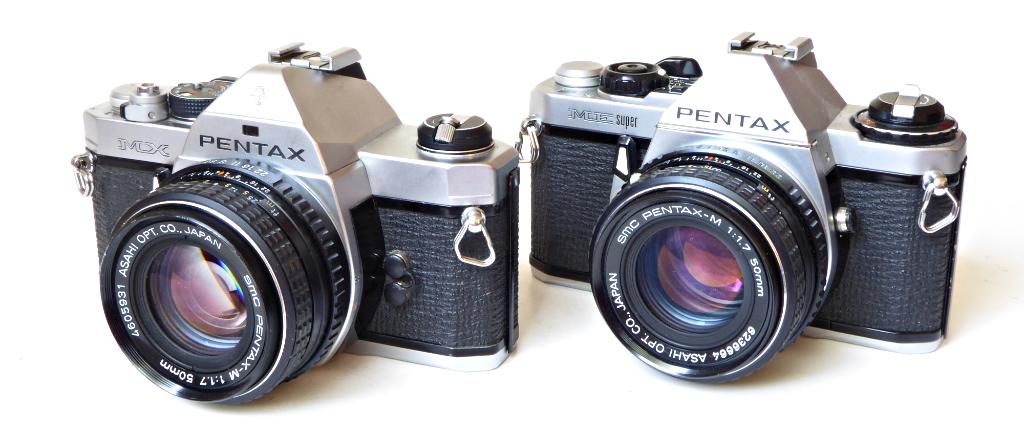
Lovely small camera with an electronically managed shutter. Cheap as chips in un-serviced condition but serviced ones fetch a lot more. Its weak link is a group of small rubber washers inside its guts which all go to make it work. As these are relatively soft rubber they decay like light seals and once gone the problems start. The mirror sticking up is the first issue. Followed by double winding where you can wind on without firing the shutter. It’s an expensive job and professional techs usually ask about £95 to sort this out as it requires a large amount of disassembly of the camera.
Electronic failure – the ME is heavily electronic and a blowout on its main circuit board normally signals the end of life. Thankfully a complete electronics failure is relatively rare with them.
Pentax MX
Seldom seen in great condition for no easily understandable reason but there are plenty of bangers. It’s a charming fully mechanical (apart from its light meter) camera but like the ME you need to be 100% certain it’s a runner. They are nasty to work on which may well translate to mean it’s going to be hard to find a technician to work on one for you. Generally reliable but one to be wary of. Spectacle wearers may end up hating it as you need to screw your eyeball into its viewfinder to get a good view thanks to its ultra wide field of view, so if you wear glasses best to try one before you buy.
Pentax K1000
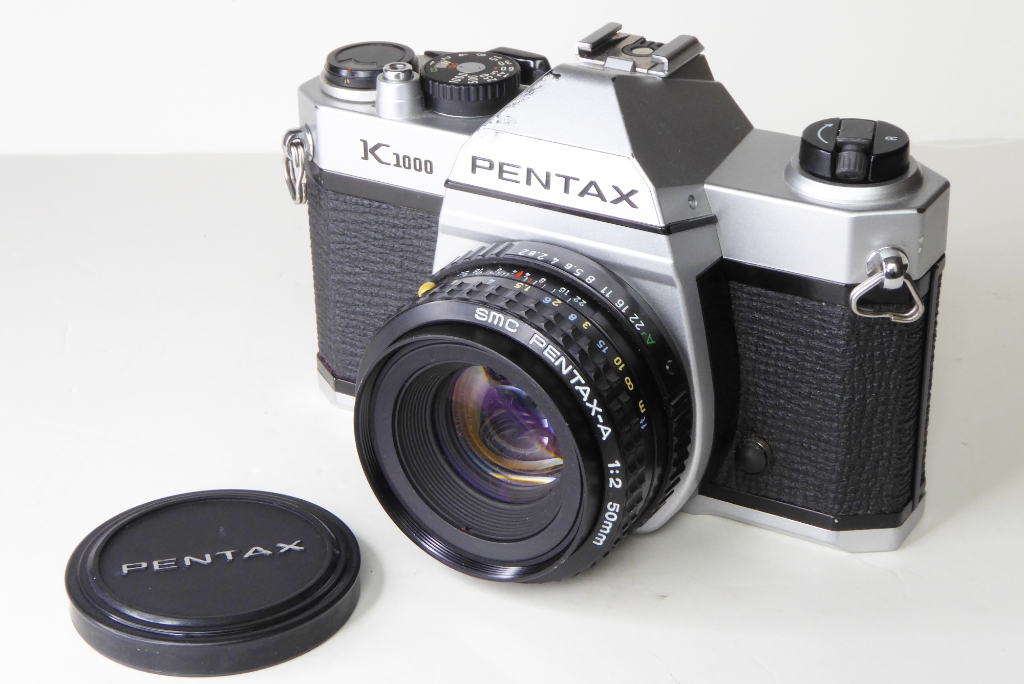
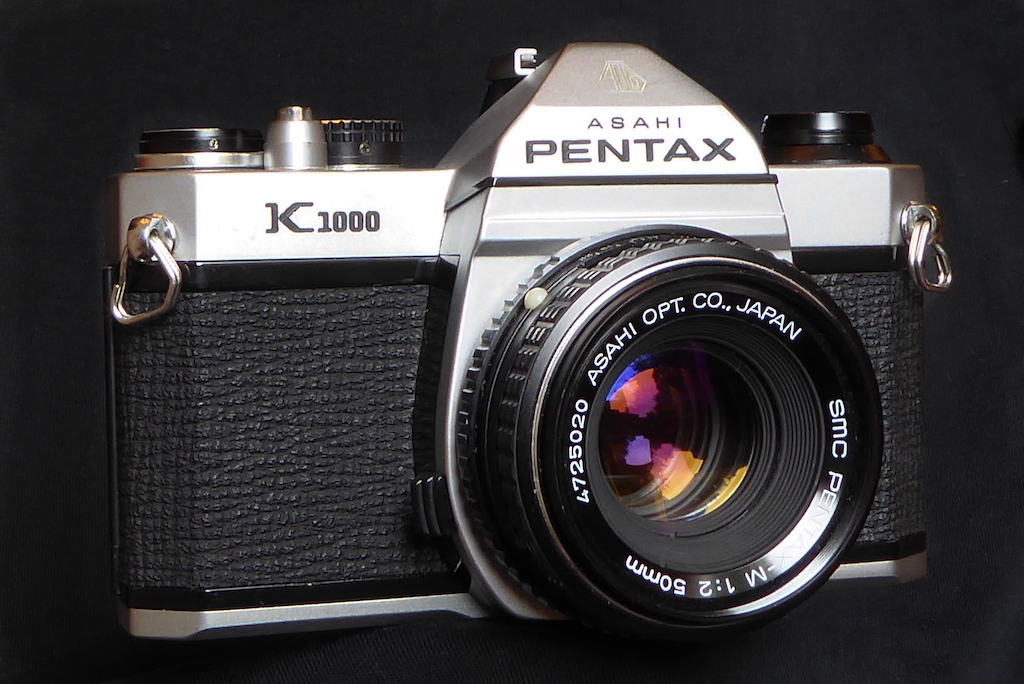
Overpriced little horror. If you’re buying, DON’T get the Chinese-made version which is very heavy on plastic and known to suffer a variety of ills. Japanese versions are generally reliable and all mechanical apart from their meter. Like the Minolta SRT, the meter cell can fail and like the SRT there are no spares. Apart from the meter an easy camera to repair for almost any professional tech. Like the Canon AE-1, it’s absurdly overvalued, especially for a ‘Made in Japan’ model for what was a student camera in its day. The cheapest of the Pentax ‘K’ series back then which is what made it sell well. Today it’s not such great value and you can get the top line Pentax KX for a lot less.
Pentax KX
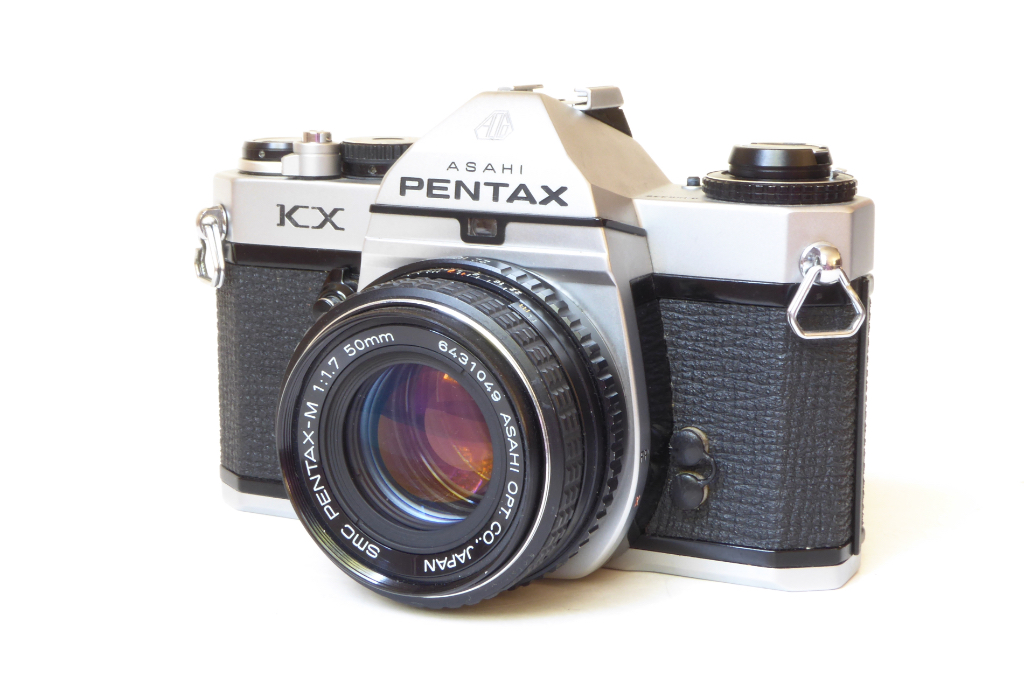
Seldom seen and usually priced lower when used than the beginner level K1000. The K1000 has its fans who used it as college students but it is very overpriced due to so many wanting to relive their first camera. The KX was the K series flagship, it’s built better and has a better, more accurate/reliable light meter. Like the K1000, it’s all mechanical and almost any professional tech can fix them. Unlike the K100 it has a more reliable light meter, match needle metering, speed and aperture readout in the viewfinder, depth of field preview, mirror lockup and self-timer. The best bang for the buck on the Pentax line.
Canon – Film Camera Buyers Guide
Canon AE-1
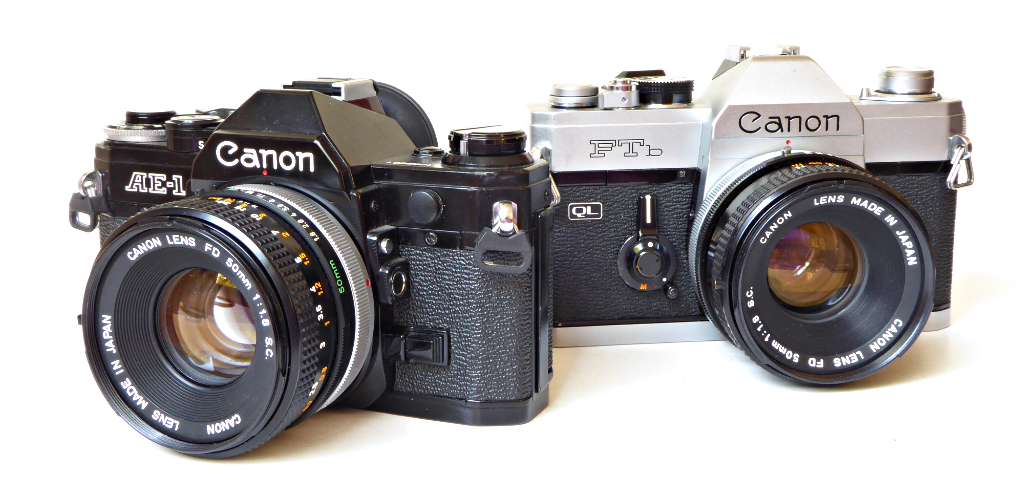
Plastic fantastic from Canon and very expensive in used condition for what was a budget camera in its day – it was the marketing budget that made it successful not its technical excellence. Generally reliable if a little clunky to use but its big weak spot is its electronics and the famous Canon cough.
The ‘cough’ will cause the mirror to return slowly after a shot. Instant experts on internet forums usually suggest squirting oil in to sort this out. DON’T, you will risk a very large repair bill – it needs a strip and clean to resolve the ‘cough’. Expect to pay around £95 for a repair job to this or more like £200 if you have been rash enough to put oil in there.
Like any electronic camera from the 1970s, its electronics should be deemed suspect until proven otherwise. Like the Pentax K1000 this has suffered price inflation due to the hype.
Canon FTb
About the same as the Minolta SRT, relatively inexpensive for a huge chunk of camera. Very underrated but built like a tank and weighs almost as much as a fully loaded Nikon F. Meters can fail like the SRT and the K1000 but the biggest hazard is the prism foam. Decaying foam on the prism will cause it to de-silver. This will usually show up as two vertical lines in the viewfinder. Reject any FTb showing this. For a more comprehensive guide on this see here where we cover prism foam removal and replacing the prism.
The early model is the best, later ones started using plastic parts and these, when handled by idiots, can show some issues like stripped gears. We reviewed this more fully in our FTb review. Like any fully mechanical camera easily repairable by almost any professional tech apart from the meter due to the lack of spare parts.
Olympus – Film Camera Buyers Guide
Olympus OM-1 & OM-2
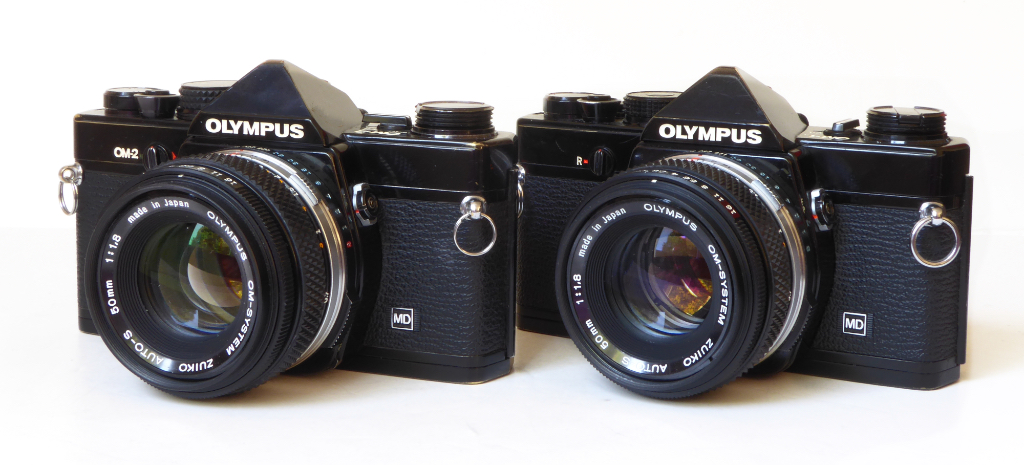
Like most of its peers, its meter can be a problem but generally, they run very well. Complete jams to its winder usually signal a weakened spring in its mechanics. Easily fixable by almost any professional. Expect to pay £50-£100 for this work if it needs doing.
Prism foam needs clearing off on any OM-1 & OM-2 as this will eat the prism. Reject any camera where the prism shows blotches or blurs as this may well indicate the prism has already begun de-silvering. It generally shows up as hazy black areas in the view through the viewfinder. We have a guide here to remove prism foam on these.
Good ones fetch a premium, un-serviced dross goes cheap but expect trouble.
The OM2 is basically an OM-1 with aperture priority auto mode. Unlike many of its peers, its electronics are generally reliable BUT like the OM-1 it can suffer meter failure which will stop the auto-mode from working.
Both models tend to suffer from slow top speeds and adjustment is awkward – expect to pay around £100 to have one professionally calibrated.
Nikon

Nope – we ain’t covering Nikon. Why? Because any Nikon is going to be pricey unless you are down with the bottom end. Most of the bottom-end of Nikon cameras have known issues. The EM and FG are reputed to be horrors and are best avoided. I can hear the screams of Nikonistas who happen to have a good one but the reason Nikon killed off the lower end was the customer services headaches caused by unreliability.
The top-end Nikon F and F2 are a tank of a camera but you will pay a premium for a good one and a bad one will cost you twice what a good one will cost in repairs and spares. For Nikon we would suggest never buy from anyone except a specialist who knows what they are about unless you are happy to pay for servicing work afterwards which can get very expensive.
The lower-cost Nikons like the EM, FG and the F-301 unless 100% working will likely be uneconomic to repair and quite likely impossible to repair due to their construction. A good running F-301 is a delight but we had to buy four lemons to get a cherry.
Point and Shoots – Film Camera Buyers Guide
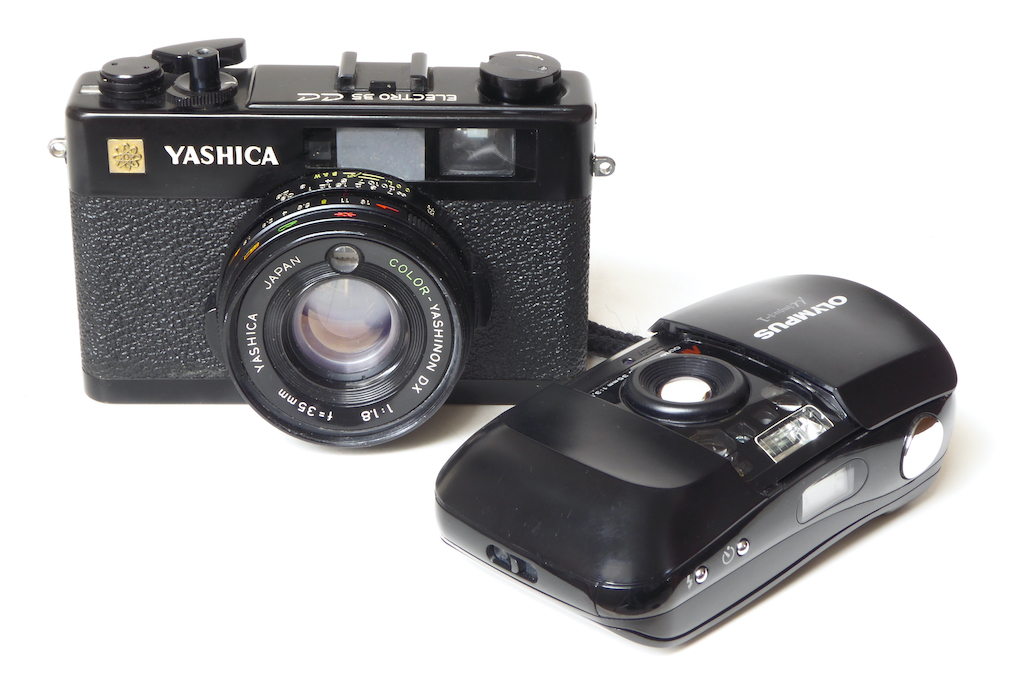
If 35mm SLR is not your bag and you’re seeking a point and shoot camera you REALLY need to do research.
The camera industry produced far more point-and-shoot style cameras than any other type in a dazzling variety of types, models and features.
Many, if not all, of these were produced down to a budget and were mostly bought by mums and dads for holiday snaps. They were not built with durability in mind and after 40-50 years many of these will be suffering all kinds of problems and many of these are simply unrepairable if things go wrong. So, if you have a hankering to be Peter Parker and shoot with a Yashica Electro 35 you need to do some serious reading to make sure you understand what the issues could be.
Many of these types of cameras can suffer terminal faults due to their inexpensive construction so be aware and don’t pay more than you can afford to lose.
Film Camera Buyers Guide – General for all cameras
Don’t overpay for ‘Brand New In Box’ (BNIB) unless you are a collector. BNIB cameras can and do have as many problems as any other camera. No matter how carefully stored the lubricants will break down and light seals will perish. We have bought a few BNIB cameras and they almost always needed significant work to get them shooting again and in one case the camera’s lubricants had leaked putting the camera beyond economic repair.
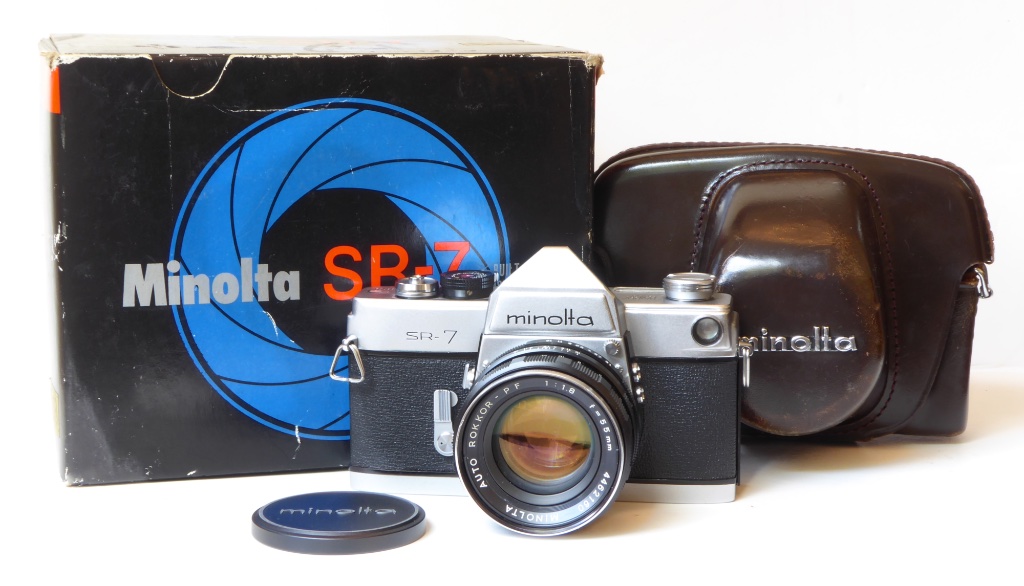
The single biggest issue most old cameras have is bad battery connections from oxidisation and/or corrosion. This is an easy fix for anyone requiring only the battery cap and its contact to be cleaned. The next most often raised issue is decaying light seals causing light leaks.
These two issues form the most asked-about issue by beginners on forums and both are relatively easy fixes. Beyond this you need to either invest in learning repairs and buying tools or accept you will have to pay for a pro to work on it. Generally to CLA a camera expect to pay around £75 – £150. Repair bills if stuff is busted can run quite high due to the scarcity of spares which usually means acquiring a donor camera. Even non-runners for some marques will fetch over £100 so a simple spare costing a few cents back in the ‘used to be’ may well end up costing several large these days.
Finally…
Don’t despair – there are good film cameras out there from people who know what they are selling but, like us, they generally want a much higher price for the work involved in bringing them to perfect pitch. We always shutter test and film test every camera before we sell it but few dealers bother.
Many sellers, and that includes dealers, lack the expertise or the equipment to properly assess a film camera. So, bear that in mind when buying and assume, unless the camera has been serviced, that you may have to pay for a service. Generally, a CLA (Clean, Lubricate and Adjust) will cost anywhere between £75 and £150 and you need to factor this into your buying decisions.
Remember these cameras were designed with a service every 5 years in mind – few of them will ever have received this and as a consequence, they will often run out of their original specification resulting in wasted film and frustration for the user.
The name of the game is to get pictures, enjoy (maybe even fall in love) with film, not spend your time chewing the carpet in frustration, sending stuff back down at the post office or waiting on repairs. If you really want to shoot film then don’t expect to spend less than the cheapest digital on the market because you will most likely be disappointed.
There is the occasional bargain out there (that’s why we created this film cameras buyers guide to help you) if you are patient, have done your research and are lucky – of course, we hope that you will be but if you aren’t check out our shop for a range of fully tested gear.
Further Reading
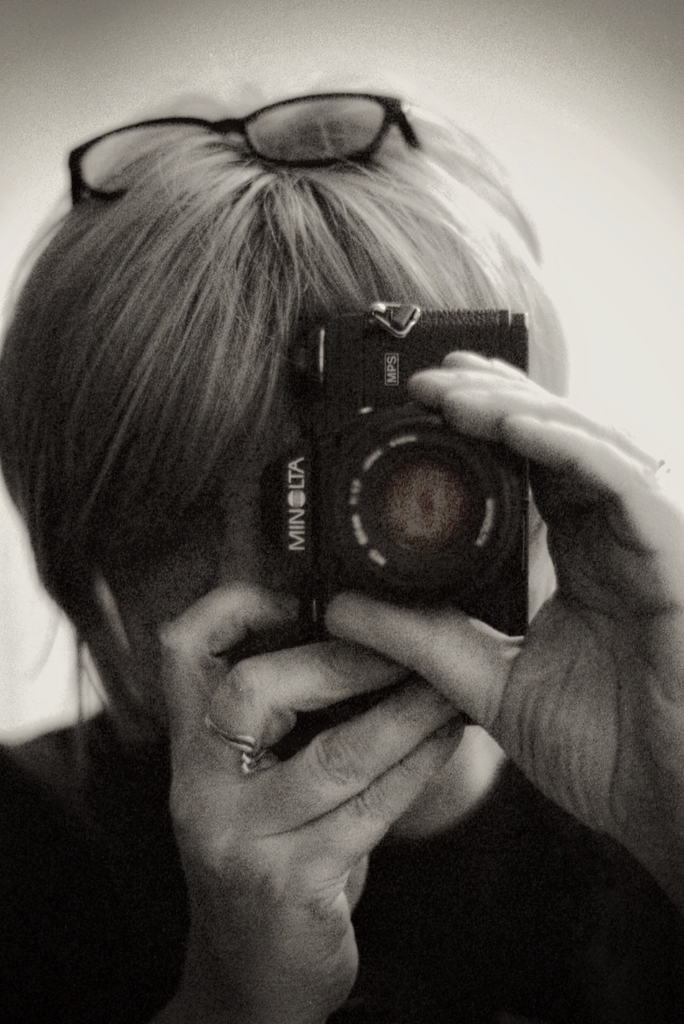
Mel is one of the driving forces behind High 5 Cameras and writes all our articles.
Starting serious photography back in 1972. Over the years she got to shoot film with most of the major brands in 35mm and large format as both a studio photographer and content provider for websites in the early life of the web. These days she is rediscovering photography and has become the GOTO person for knowledge on camera repair advice.


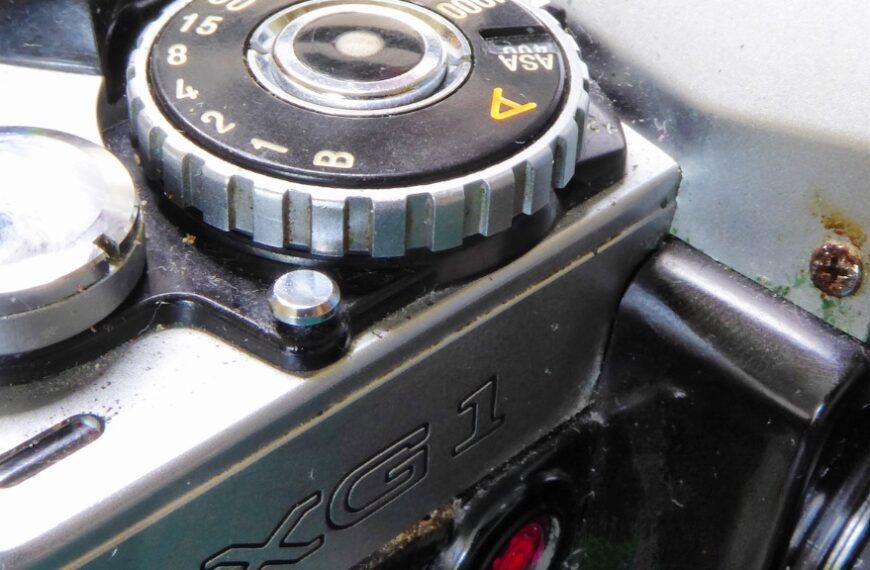
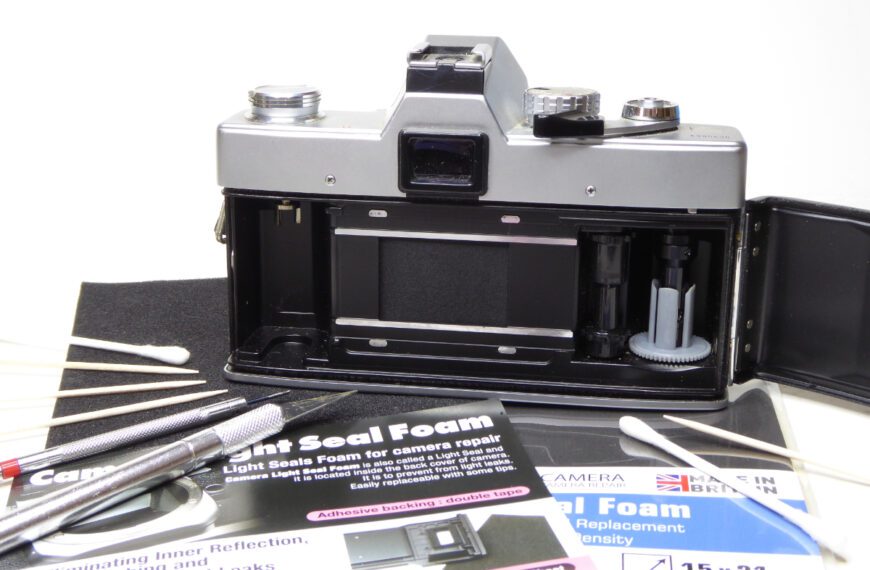
These days you can buy a clean, happy Nikon FM (my pref), FE or FA for less than an AE-1 or K1000. God knows why but that’s the hipster hype for you. Same late-70s/early-80s aesthetic but far higher spec cameras. You can even get an F4, F5 or decent F2 for less depending on where you look. I know what I’d rather have, or more accurately, put my money into long term.
Best value for money would be early-mid 90s Canon and Nikon AF prosumer level cameras. Unwanted and dirt cheap.
Hi,
Yes it is strange, personally Mel and I have never been fans of either the AE-1 or the K1000. What made them successful was the huge pile of cash Canon put behind marketing it the AE-1 and the low cost of the Pentax K1000 as it was aimed at the cost constrained customer.
For quality classics our pics would be the Pentax KX, its built like a tank and very reliable. The Canon FTb for its super slick and shockless operation and the Minolta SRT101 for its overall reliability. For those who want more in the way of electronics we prefer the Minolta X series. Generally very reliable and nicer to use than the AE-1.
Between us we never used the Nikon FM (Mel has a 45 year old love affair with the Nikon F) though we gather it’s a lovely shooter. You may well know ‘Afghan Girl’ a very famous photo from the Afghan war was taken with a Nikon FM.
Something modern film fans often forget is that some of the most iconic pictures of the 20th century were shot with relatively simple cameras.
Thanks for visiting the site and we hope you will find other articles of interest as we publish them.
Coming soon is an article of the Pentax MX and another on Photo journalism.